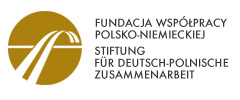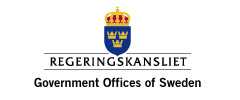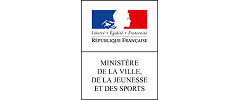Risk of nuclear disaster larger than expected
When could be the next nuclear disaster? This question has been investigated by Mainz atmospheric chemists, who have also calculated which region is most vulnerable: Southwest Germany.
22.05.2012 |DPA
After completing analysis of a global comparison, they have found that the population in the densely populated south-western area of Germany, situated by numerous nuclear power plants that lie on the borders with France and Belgium, have the highest risk of radioactive contamination. Western Europe - including Germany - will likely be burdened once in approximately 50 years with more than 40 kilobecquerels of radioactive cesium-137 per square meter. According to a definition from the International Atomic Energy Agency (IAEA) an area of this size and affected with these values would be considered radioactively contaminated. There are currently 440 nuclear reactors in operation worldwide, with more than 60 currently in the planning stages.
Probability of a meltdown
To determine the probability of a meltdown, researchers calculated the life of all nuclear reactors worldwide from the start of the first commercial reactors until today. The sum of this calculation - 14,500 years - was then divided by the number of four core meltdowns - one in Chernobyl, and three in Fukushima.
Mainz researchers have said that the global risk of a catastrophic reactor accident is larger than previously expected. With the current inventory of nuclear power plants, there could be one accident about every 10 to 20 years, which is a worst case scenario or the worst possible accident, as the atmospheric chemist Jos Lelieveld calculated. This estimate is significantly more frequent than has been estimated in the past, said the Max Planck Institute for Chemistry in Mainz on Tuesday.
"It follows then, that a reactor meltdown is likely to occur in the next 3,625 reactor years,” said Lelieveld. Even if this result is rounded up to 5,000 reactor years, the risk still lies 200 times higher than estimates provided by the U.S. approval commission for nuclear reactors in 1990. Issues not directly addressed in the study were how old is a reactor, what type it is and the area in which it lies.
Model for distribution of radioactive pollution
"When we look at Fukushima only as a worst case scenario, the risk decreases by half,” says Lelieveld. Using a model, the atmospheric chemists also calculated the spread of radioactive contamination after a disaster. Therefore, half of the radioactive cesium-137 would be transported more than 1000 kilometers. The study was published in the journal 'Atmospheric Chemistry and Physics.”
Every 20 years, a GAU*
*GAU (Größter Anzunehmender Unfall), is the German term used to refer to nuclear accidents of a level 4 category, according to the International Nuclear Event Scale. For reference, a Super-GAU, is used to refer to accidents, such as the disaster in Chernobyl.
Original German text:Alle 20 Jahre ein GAU
Risiko für Reaktorunfall größer als angenommen
Wann könnte es die nächste Atomkatastrophe geben? Der Frage sind Mainzer Atmosphärenchemiker nachgegangen. Sie berechneten auch, welche Region am gefährdetsten ist: Südwestdeutschland.
Nach der Analyse tragen im weltweiten Vergleich die Einwohner im dicht besiedelten Südwestdeutschland durch die zahlreichen Kernkraftwerke an den Grenzen zu Frankreich und Belgien das höchste Risiko einer radioaktiven Verseuchung. Westeuropa - inklusive Deutschland - werde wahrscheinlich einmal in etwa 50 Jahren mit mehr als 40 Kilobecquerel radioaktivem Cäsium-137 pro Quadratmeter belastet. Nach einer Definition der Internationalen Atomenergie Behörde (IAEA) gilt ein Gebiet ab diesem Wert als radioaktiv kontaminiert.Momentan seien weltweit 440 Kernreaktoren in Betrieb, 60 weitere befänden sich in Planung.
Wahrscheinlichkeit einer Kernschmelze
Um die Wahrscheinlichkeit einer Kernschmelze zu ermitteln, berechneten die Forscher die Laufzeit aller Kernreaktoren weltweit von der Inbetriebnahme des ersten zivilen Reaktors bis heute. Diese Summe - 14.500 Jahre - teilten sie durch die Zahl von vier Kernschmelzen - eine in Tschernobyl und drei in Fukushima.
Das weltweite Risiko für einen katastrophalen Reaktorunfall ist Mainzer Forschern zufolge größer als angenommen. Mit dem momentanen Bestand an Atomkraftwerken könne es etwa einmal in 10 bis 20 Jahren einen GAU geben, also den größten anzunehmenden Unfall, wie der Atmosphärenchemiker Jos Lelieveld ausrechnete. Dies sei deutlich häufiger als in der Vergangenheit geschätzt, teilte das Max-Planck-Institut für Chemie in Mainz am Dienstag mit.
"Daraus ergibt sich, dass es in 3625 Reaktorjahren zu einem GAU kommt", erklärte Lelieveld. Selbst wenn dieses Ergebnis auf 5000 Reaktorjahre aufrundet wird, liege das Risiko 200-mal höher als Schätzungen der US-amerikanischen Zulassungskommission für Kernreaktoren im Jahr 1990 ergaben. Bei der Studie blieb außen vor, wie alt ein Reaktor ist, von welcher Bauart und in welchem Gebiet er liegt.
Modell für Verteilung von radioaktiver Belastung.
"Wenn wir Fukushima nur als einen GAU betrachten, verringert sich das Risiko um die Hälfte", sagte Lelieveld. Mit einem Modell berechneten die Atmosphärenchemiker zudem, wie sich die radioaktive Belastung nach einem GAU verteilt. Demnach würde die Hälfte des radioaktiven Cäsium-137 mehr als 1000 Kilometer, ein Viertel weiter als 2000 Kilometer transportiert. Die Studie ist im Journal "Atmospheric Chemistry and Physics" veröffentlicht.
(dpa, N24)
22.05.2012 22:48 Uhr
Related News
Meet the Winners of the Gender Just Climate Solutions Award at COP24
On the 70th anniversary of the Universal Declaration of Human Rights, we awarded Gender Just Climate Solutions Winners at the climate negotiations in Katowice, Poland
11.12.2018
Invitation: Gender Just Climate Solutions Award 2018
10 December, COP24 Katowice
04.12.2018
Getting to the Future We Want
4-7 November, Brussels: European Environmental Bureau’s (EEB) Annual Conference
12.11.2018
GoodFood4All
WECF and partners all over Europe start GoodFood4All Campaign
06.11.2018
#Ruralwomen: join our Women2030 campaign!
15.10.2018






































